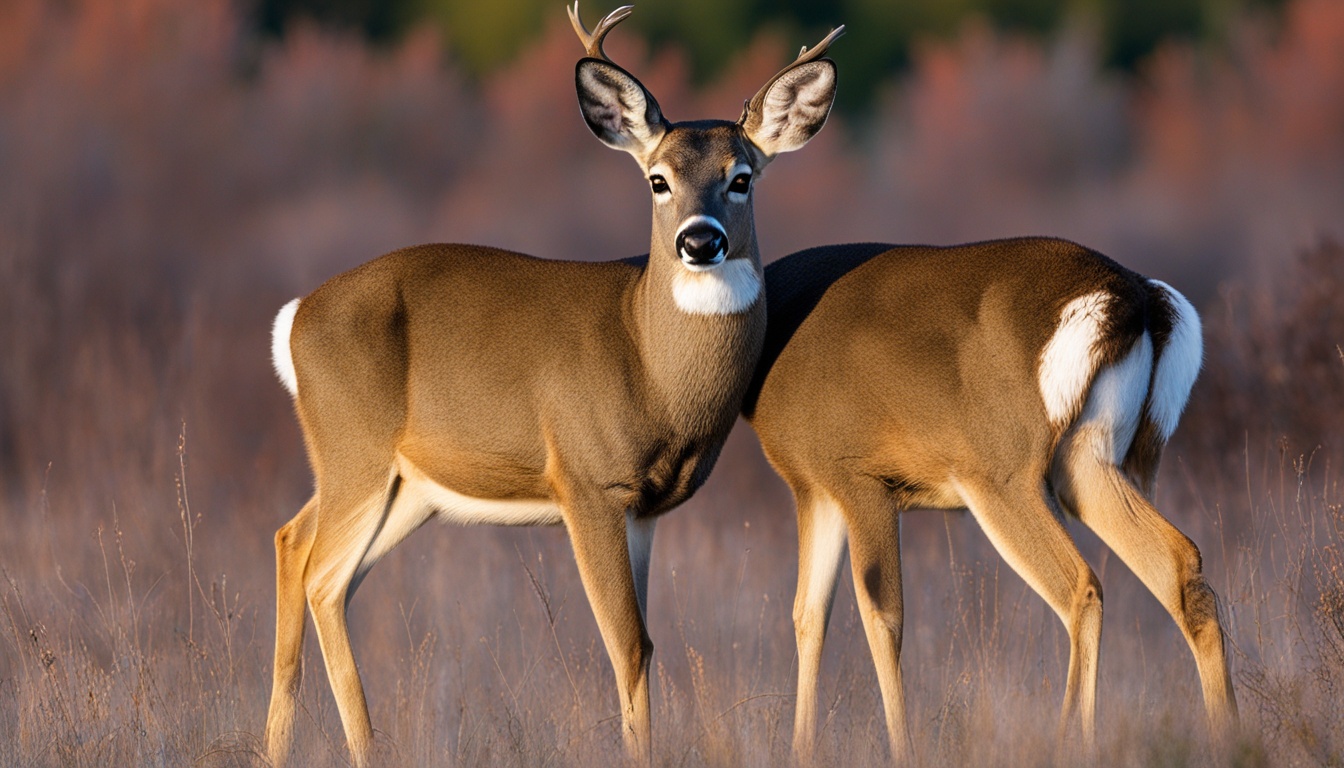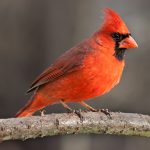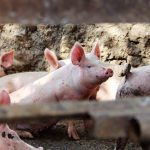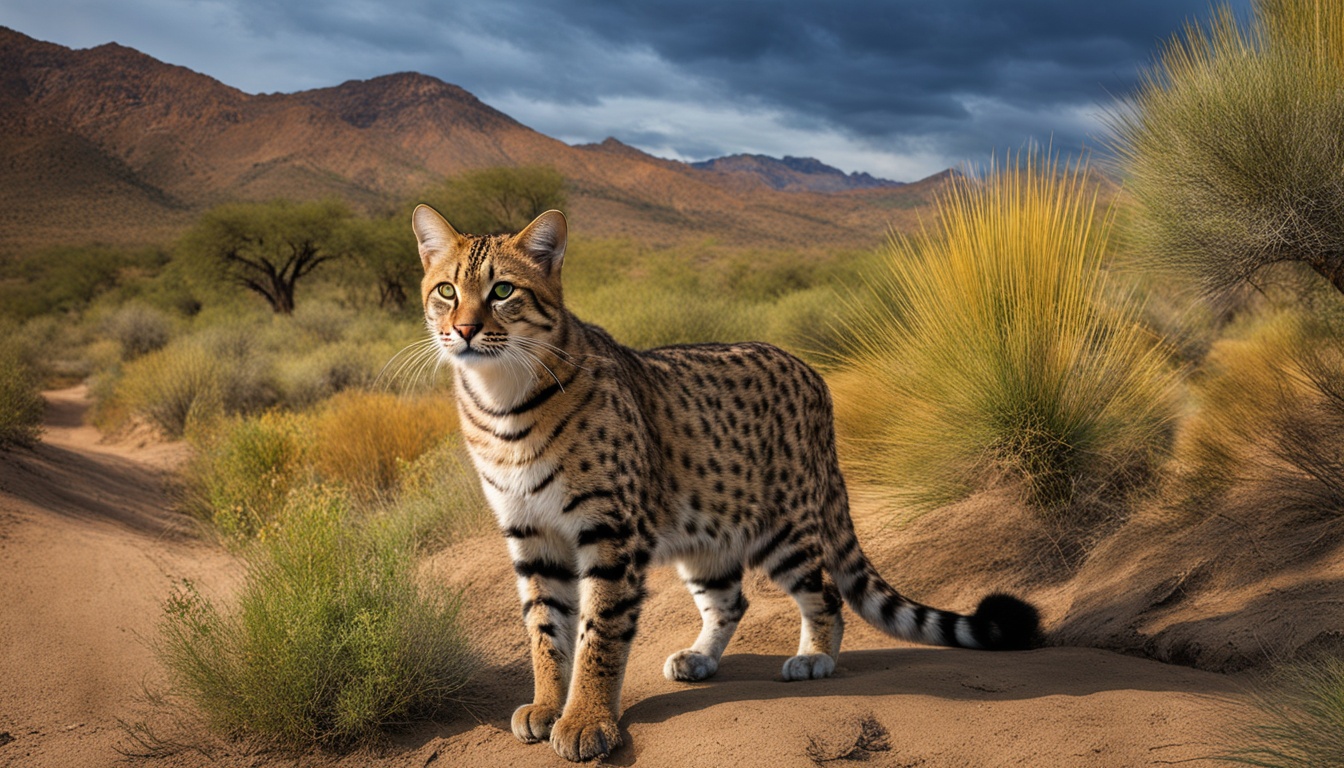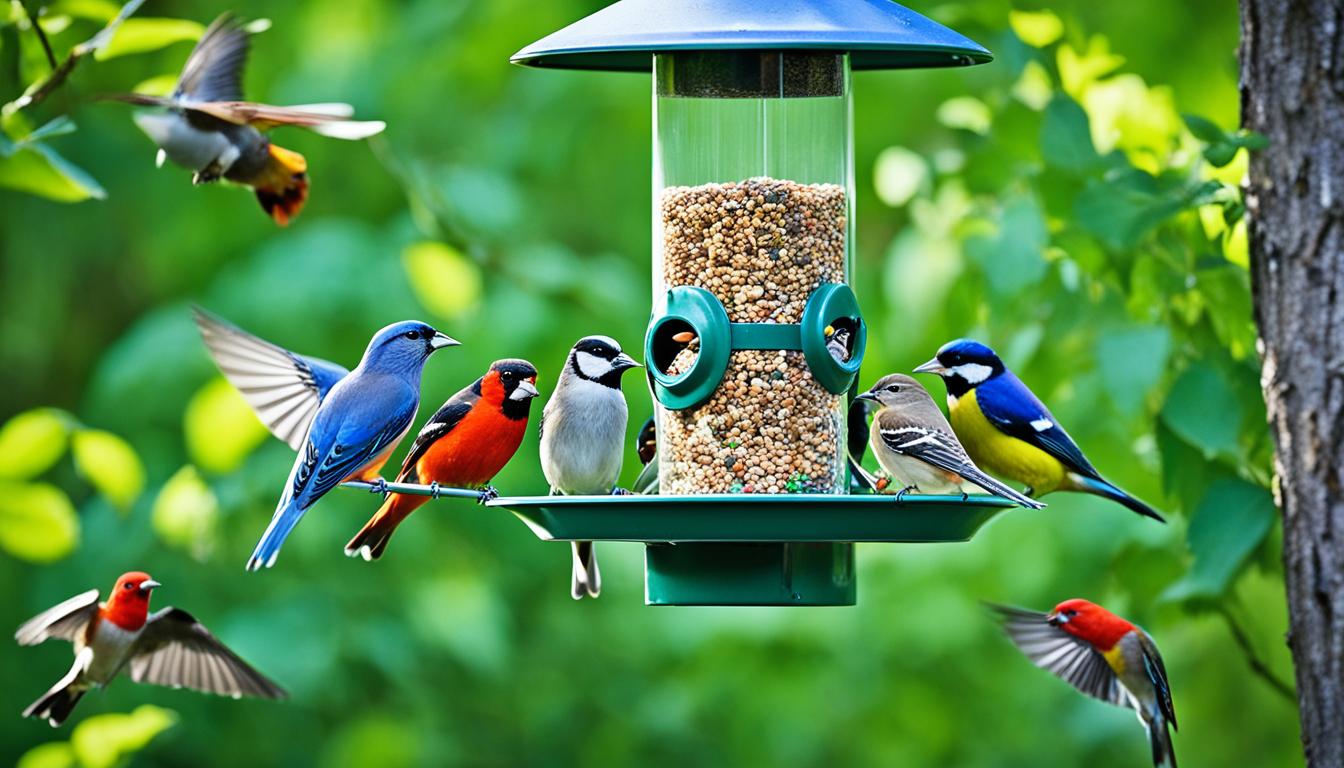Ever wanted to know how to spot the different kinds of deer in the USA?
Knowing deer types is a cool skill. It makes your outdoor time more fun. It also helps keep an eye on wildlife and protect it. The white-tailed deer, mule deer, and black-tailed deer all have unique looks and habits.
If you like eating venison, knowing how to tell deer apart is key. These animals come out more when their homes change, like after forest fires. The white-tailed deer is the most seen kind. Learning about how they look and act is the first step in telling deer types apart.
Learn why hunting white-tailed deer is popular in the US. And what makes mule and black-tailed deer unique. Each deer type is important in America’s wildlife story. Let’s start exploring American deer!
Introduction to Deer Identification
Identifying deer is very important for hunters and those who love wildlife, especially in the United States. Knowing the difference between white-tailed deer, mule deer, and black-tailed deer is key. It helps with following hunting rules.
Knowing about U.S. deer species helps you see what makes each type unique. White-tailed deer are very common in the U.S., while mule deer stand out with their big ears and special antlers. This makes them easier to find in different areas.
Learning how to spot these key differences is important not just for hunting but also for enjoying wildlife. It means you follow the rules properly and get to know more about the many types of nature out there.
Here’s what you should look for in different deer breeds:
| Deer Breed | Key Features | Common Habitat |
|---|---|---|
| White-Tailed Deer | White underside of the tail, which is raised when alarmed | Forests, farmlands |
| Mule Deer | Large, mule-like ears, branched antlers | Rocky terrains, mountainous regions |
| Black-Tailed Deer | Distinct black tail, darker coat | Coastal regions, western states |
Knowing about different deer breeds is very helpful for hunters and wildlife fans. It means you can enjoy deer in the right way and help keep their populations thriving in the U.S.
Common Deer Species in the United States
North America has many deer subspecies. Learning about each one can help us understand and enjoy nature better. It helps to know their features for proper identification and appreciation.
White-Tailed Deer
The white-tailed deer is very common across North America. It’s known for its white tail and a coat that changes color. You can find them in forests and fields, showing how adaptable they are.
Mule Deer
Mule deer are known for their big, mule-like ears and forked antlers. They live in the west and move during different times of the year. Their unique traits make it important to correctly spot them, especially where their territory overlaps with white-tailed deer.
Black-Tailed Deer
Black-tailed deer are unique to the Pacific coast. They have black-tipped tails and other features that set them apart. Clearly identifying them is key, especially in areas where they meet other deer types. This ensures accurate observation.
| Deer Species | Key Characteristics | Habitat |
|---|---|---|
| White-Tailed Deer | White tail, seasonally changing coat color | Dense forests, open fields |
| Mule Deer | Large ears, bifurcated antlers | Western regions, seasonal migration |
| Black-Tailed Deer | Black-tipped tail, distinct morphology | Pacific coast |
How to Identify White-Tailed Deer
Identifying deer types in the US can be interesting, especially the white-tailed deer. They are quite common and stand out with their special traits and ways.
Physical Characteristics
It’s key to notice the looks of white-tailed deer for proper identification. They sport a very visible white tail, which pops up when they feel threatened. Bucks have antlers showing a main beam and a few shorter tines.
Their coat changes colors from shades of brown in summer to grays in winter.
Behavioral Traits
Knowing how white-tailed deer act is crucial too. They tend to stick to small areas for most of their life. If they get scared, they show their white tails to warn other deer.
They live in small, family-like groups headed by does. During mating season, bucks put on shows to catch females’ attention.
Habitat Preferences
Recognizing where deer like to live is part of identifying them. White-tailed deer love forests since they offer good hiding spots and food. But they’re also found in farms and even in the suburbs.
They munch on leaves, twigs, fruits, and nuts, favoring places with lots of plants.
Studying these details helps you get better at spotting the white-tailed deer in America.
The Characteristics of Mule Deer
In the US, telling deer apart can be challenging. But, the mule deer stands out. It has special looks and habits. You can find it in many different areas.
Appearance and Size
Mule deer are easy to spot. They have reddish summer coats and a cream-colored rear. You’ll notice a black tip on their tail. Their antlers are like branches, making them look balanced. They have a sturdy body build, typical for their kind.
Unique Behavior
Mule deer show off some unique actions too. They have a special way of running when they’re scared, called stotting. This helps them live in places from thick forests to wide grasslands. During their breeding season, from October to December, they become more active.
Understanding Black-Tailed Deer
The Black-tailed deer live near the Pacific coast and are different from other deer species. They are smaller than mule deer and have a black tail, making them easy to spot in nature.
Visual Identification
To spot the different deer kinds, notice the details. Black-tailed deer have a black tail and are smaller than mule deer. Their fur changes with the seasons. It might look reddish-brown in summer and grayish in winter. The antlers of male Black-tailed deer grow in a unique branching pattern.
Geographical Range
Where deer live helps tell them apart. Black-tailed deer stay mostly along the Pacific coast, west of the Cascade Range. This keeps them apart from mule deer, showing a clear boundary in their habitats. They thrive in Northern California, Oregon, and Washington.
| Characteristic | Black-Tailed Deer | Mule Deer |
|---|---|---|
| Tail Color | Completely Black | Black-tipped |
| Distribution | Pacific Coast | Western North America |
| Antler Structure | Branching Pattern | Equally Branched |
| Body Size | Smaller | Larger |
How do you identify different types of deer in the USA?
To tell different deer types apart in the USA, you need to notice special physical attributes, behaviors, and habitats. These are unique to species like the white-tailed, mule, and black-tailed deer. Identifying deer in the USA goes beyond just looks. You must pay attention to many unique signs.
The white-tailed deer is known for its white tail that flashes when alarmed. They are found in many places and have a specific look to their antlers. Mule deer, however, stand out with their big ears and antlers shaped like a “Y”. Black-tailed deer, near the Pacific, have tails that are all black. This feature helps tell them apart from mule deer.
Here is a comparison table to help with deer identification in the US:
| Deer Species | Physical Attributes | Behavior | Habitat |
|---|---|---|---|
| White-Tailed Deer | White underbelly, main beam antlers | Diverse, forested areas, seminomadic | Broad range across the USA |
| Mule Deer | Large ears, forked antlers | High deserts, mountains, stotting gait | Western regions |
| Black-Tailed Deer | Black tail, smaller size | Coastal browsing | Pacific coastal regions |
Knowing how to identify deer types is vital for those who enjoy hunting legally. It also makes you appreciate wildlife more. Learning to spot different deer in the US is key for everyone, from fans to pros.
Distinguishing Bucks and Does
Knowing the difference between bucks and does in the US helps in deer identification. Bucks have antlers, but does do not. Bucks are bigger and more muscular than does.
Bucks also have thick necks, especially when it’s rutting season. In contrast, does seem thinner and their necks aren’t as muscular as bucks. Spotting these differences makes it easier to tell deer types apart in the US.
Silent observation of behavioral traits can also be insightful. Bucks are often more solitary and engage in aggressive displays during the mating season, while does are generally more social and nurturing toward their fawns.
This knowledge isn’t just for adult deer. You can see it in younger deer too by the presence of antlers. Buck fawns show early signs of antler growth, which doe fawns don’t.
Identification of Deer Fawns
Identifying deer fawns is key for both nature lovers and hunters. To spot these little deer, you need to know what makes them stand out. This includes their unique looks and how they act. Learning to recognize deer in the US will help you tell one deer from another all across North America.
Physical Characteristics
Deer fawns stand out because they are smaller and squarer than grown-up deer. They also have big ears for their size. One big clue is that male fawns, or bucks, might already be growing antlers. Female fawns, or does, won’t have these.
Behavioral Traits
When you watch deer fawns, you’ll notice they’re not scared and love to play. These behaviors show they’re young. Knowing this can help you figure out what type of deer you’re looking at. It also adds to your knowledge of North American deer species.
Understanding Deer Antlers
Exploring deer types, we must consider antlers. Unlike horns, antlers fall off and grow back each year. This is seen in animals like the white-tailed deer. Mule deer and elk also have this feature.
Difference Between Antlers and Horns
Horns and antlers are often mixed up. Animals like bison have horns. They are made of keratin and keep growing. On the other hand, antlers are made of bone and re-grow yearly. It is key to note that, mostly, only male deer have antlers. Caribou, though, is an exception. Here, both males and females grow antlers.
| Characteristic | Antlers | Horns |
|---|---|---|
| Composition | Bone | Keratin |
| Growth | Annually shed and regrown | Continuous growth |
| Presence | Typically males (except caribou) | Both sexes |
This difference is key in deer types. It helps hunters and enthusiasts tell them apart easily.
Regional Variants of Deer in the USA
In the USA, a wide range of deer species can be found. There are several regional subspecies with their own unique traits. This deer subspecies in North America knowledge is crucial for understanding where each type lives best.
Subspecies of White-Tailed Deer
White-tailed deer are the most common deer species in the United States. They have unique subspecies. For example, there is the Acapulco white-tailed deer. It is known for being small and features a special coat color for hot climates. Then, there’s Coues’ white-tailed deer, which is smaller and lives in the rocky lands of the Southwest. The Florida Keys white-tailed deer is quite unique too. It’s adapted for island life, needing less food and being smaller in size.
Subspecies of Mule Deer
Mule deer are also well-known across the country. They have their own regional types. For example, the California mule deer is mainly found in California’s mountains. It has features that help it survive in these areas. Then, there is the desert mule deer. It lives in dry places and is known for handling very hot weather and little water very well. This shows the amazing way deer subspecies in North America can adapt to their surroundings.
The Importance of Accurate Deer Identification
Knowing the right deer type matters a lot. It helps with managing wildlife well, setting up the right hunting rules, and aiding in conservation work. By telling deer apart, we help keep deer numbers steady.
Identifying different deer types is also key for following hunting laws correctly. There are specific laws for each type when it comes to when you can hunt and how many you can bag. With this knowledge, hunters can make sure they’re following all the rules and hunt ethically.
It also makes outdoor enthusiasts appreciate the great wildlife in North America more. No matter if you hunt, love wildlife, or work to protect it, knowing about US deer types adds to your enjoyment and learning.
For a complete overview, check this handy table for spotting different deer kinds:
| Deer Type | Key Characteristics | Common Habitats |
|---|---|---|
| White-Tailed Deer | Bright white tail, antlers with main beam and tines | Forests, open regions |
| Mule Deer | Large ears, black-tipped tail, bifurcated antlers | Diverse ecosystems, including forests and grasslands |
| Black-Tailed Deer | Smaller size, completely black tail | West of the Cascade Range |
Getting deer identification right is important for hunting legally and ethically, as well as for conserving wildlife. The effort we put into understanding deer classification ensures we protect North America’s biodiversity for the next generations.
Changing Landscapes and Deer Populations
Human actions and natural events are always changing the places where deer live. Knowing the types of deer is important. This is because where they live affects them a lot. For instance, as cities grow, deer move to places with more food and shelter.
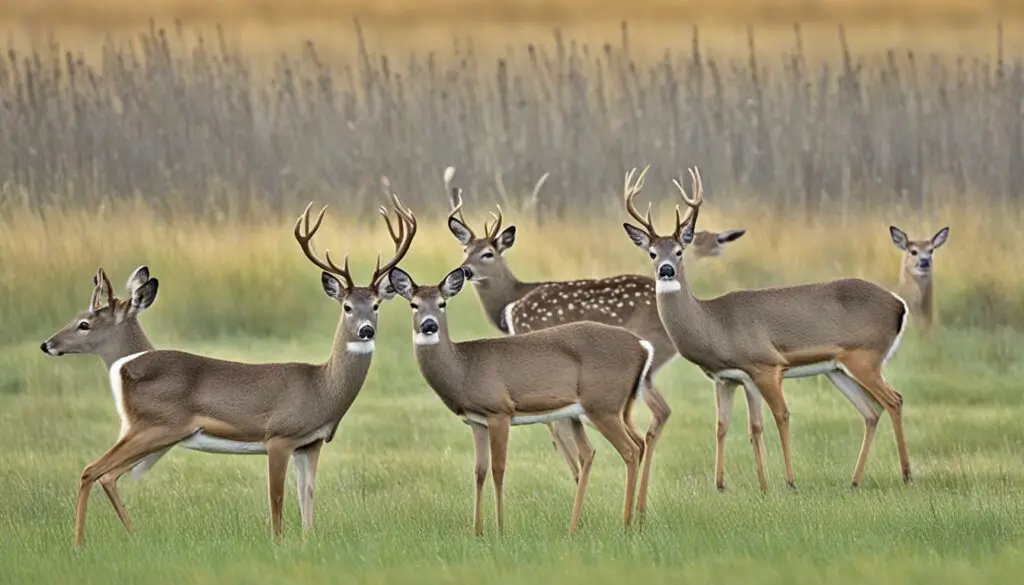
Changes like cities spreading, climate change, and growing forests impact deer numbers. When areas burn, new plants grow and deer come for the food. It’s important for people who care about deer, like hunters, to understand these changes.
Now, let’s compare how different things affect deer and their homes:
| Cause | Impact on Deer Habitat | Effect on Deer Populations |
|---|---|---|
| Urban Development | Loss of natural habitats | Migration to suburban and rural areas |
| Forest Fires | New vegetation growth | Increased visibility and hunting opportunities |
| Climate Change | Altered food availability and distribution | Shifts in migration patterns |
In the end, identifying deer in the U.S. means more than just knowing their types. It’s also about how the world around them changes their lives. This understanding can help with protecting them and hunting in a smart way.
Conclusion
Spotting different types of deer in the US is more than a skill. It’s a way to feel closer to nature. You learn about white-tailed deer, mule deer, and black-tailed deer. This helps in keeping the wildlife safe, promotes eco-tourism, and good hunting practices.
As the world changes, knowing your deer types is more important. Human actions and natural events shift where deer live. This makes learning about deer even more crucial. If you love wildlife or aim to protect it, knowing your deer is key.
In short, being able to tell deer types apart is important. It helps keep nature in balance and deer thriving. Becoming good at this lets you enjoy nature more. And it ensures that future generations can cherish the amazing wildlife of the US.

